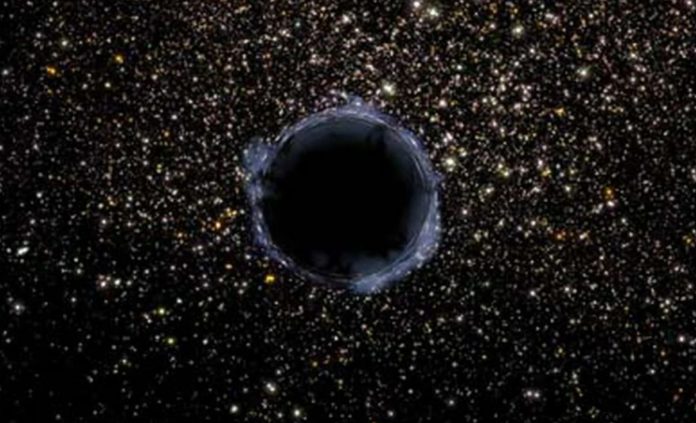A new study says that black holes are really big fuzzy balls.
The study aims to put an end to the controversy around Stephen Hawking’s famous information paradox, which was sparked by Hawking’s conclusion that any data that enters a black hole can never come back.
Despite the fact that this conclusion was consistent with the principles of thermodynamics, it was at odds with the fundamental laws of quantum physics.
“What we found from string theory is that all the mass of a black hole is not getting sucked in to the center,” says professor Samir Mathur, lead author of the study. “The black hole tries to squeeze things to a point, but then the particles get stretched into these strings, and the strings start to stretch and expand and it becomes this fuzzball that expands to fill up the entirety of the black hole.”
The study, which was published Dec. 28 in the Turkish Journal of Physics, discovered that string theory very probably does contain the solution to Hawking’s paradox, as the paper’s authors originally believed.
It was proven through mathematical proof that Hawking’s fuzzball theory is still the most plausible answer to Hawking’s information conundrum, according to the physicists.
The researchers also published an editorial in the International Journal of Modern Physics in December that explained how their discovery could help address long-standing cosmological mysteries.
Mathur released a paper in 2004 in which he hypothesized that black holes were like very big, extremely messy balls of yarn — “fuzzballs” that grow larger and messier as additional objects are dragged into them.
“The bigger the black hole, the more energy that goes in, and the bigger the fuzzball becomes,” Mathur added.
The 2004 study discovered that string theory, the physics theory that argues that all particles in the universe are comprised of microscopic vibrating strings, could be the solution to Hawking’s paradox. There is no puzzle when using this fuzzball shape because the hole radiates like any other normal body, and there is no hole.
According to Mathur, when his 2004 study and other, similar works were published “many people thought the problem was solved. But, he further added, “in fact, a section of people in the string theory community itself thought they would look for a different solution to Hawking’s information paradox. They were bothered that, in physical terms, the whole structure of the black hole had changed.”
Recent studies have sought to reconcile Hawking’s results with the traditional view of the black hole, which depicts the black hole as an “empty space with all of its mass in the center.” One theory, known as the wormhole paradigm, proposed that black holes could be one end of a bridge in the space-time continuum, with anything that entered a black hole appearing on the other end of the bridge — the other end of the wormhole — in a different location in space and time than it did when it entered.
However, some low-energy radiation must escape from the black hole’s edges in order for the wormhole theory to work.
This recent study proved a theorem — the “effective small corrections theorem” — demonstrating that if that happened, black holes would not appear to radiate in the manner they do now.
The researchers also looked at the physical properties of black holes, such as topology change in quantum gravity, in order to establish whether or not the wormhole paradigm would be successful.
“In each of the versions that have been proposed for the wormhole approach, we found that the physics was not consistent,” Mathur added. “The wormhole paradigm tries to argue that, in some way, you could still think of the black hole as being effectively empty with all the mass in the center. And the theorems we prove show that such a picture of the hole is not a possibility.”
Source: abstract
Image Credit: Getty
You were reading: Black holes like fluff balls explain Hawking’s paradox, study
